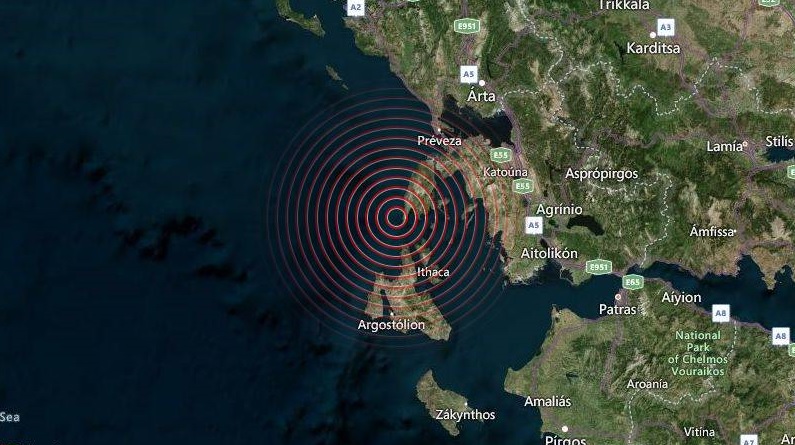
Lefkada, Greece was shaken by a magnitude 4.3 earthquake that hit the island in the Ionian Sea early on Tuesday.
According to the National Observatory of Athens (NOA), the quake at 06:49 a.m. struck at a focal depth of 16.5 kilometers near the village of Vasiliki.
Earlier, the European-Mediterranean Seismological Centre (EMSC) reported that the earthquake hit at a very shallow depth of two kilometers and had a magnitude of 5.2.
There are no reports of injuries or damage on Lefkada or other nearby Ionian islands.
Based on preliminary seismic data, the quake was probably felt by many people in the area of the epicenter. It should not have caused significant damage other than objects falling from shelves or broken windows.
Lefkada was hit by a 6.1 earthquake in 2015
In 2015, a 6.1 magnitude earthquake hit Lefkada killing two people and causing extensive damage to the island.
The earthquake occurred eighteen kilometers west of the island, and it was five kilometers deep in the Ionian Sea, according to the Athens Geodynamic Institute.
A sixty-year-old woman was killed by a falling boulder on her house in the village of Vasiliki. Another woman was killed at the Athani village, reportedly from a collapsed electric company pole.
Greece is especially earthquake-prone
Greece lies in a highly seismically-active region. The vast majority of earthquakes cause no damage or injuries, however.
In October 2020, an earthquake that struck the eastern Greek Aegean island of Samos and the nearby Turkish coast killed two people on Samos and at least seventy-five people in Turkey.
The country is located in a complex geological boundary zone in the eastern Mediterranean between the African and Eurasian Plates.
The northern part of Greece lies on the Eurasian Plate while the southern part lies on the Aegean Sea Plate.
The Aegean Sea Plate is moving southwestward with respect to the Eurasian Plate at about thirty millimeters (one inch) per year while the African Plate is subducting northward beneath the Aegean Sea Plate at a rate of about forty millimeters (1.6 inches) per year.
See all the latest news from Greece and the world at Greekreporter.com. Contact our newsroom to report an update or send your story, photos and videos. Follow GR on Google News and subscribe here to our daily email!



